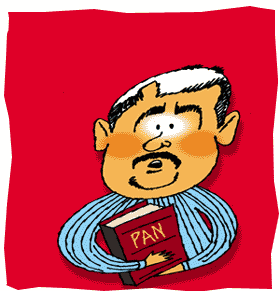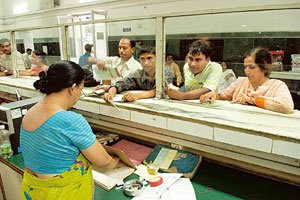
Believe it or not, it's true.One would be forgiven for being sceptical because for the ongoing year (FY 2008-09), the total income exempt from income tax in the hands of a male individual is only Rs 150,000 and that for a woman taxpayer only Rs 180,000 (for senior resident Indian citizens above the age of 65 years, the tax exemption is higher at Rs 225,000 but for our purpose, we shall consider a family where all the members are below the 65 years of age.). So how, then, can an income of Rs 13.10 lakh be completely exempt from tax?You can achieve this by following one of the five golden rules of tax planning, namely, by spreading your income among your family members.This golden rule makes creative use of the classic power concept of divide and rule. The simple strategy is that each family member must have his or her independent source of income so as to legally become an independent taxpayer under the provisions of the Income Tax Law. When the entire income of a family belongs to just one member, the tax liability is very much higher than when the same income is divided among different members of the family.Thus, the first golden rule of tax planning requires that one develops income tax files for oneself, one's spouse, one's major children, the Hindu Undivided family, and for all other major relatives in the family, including one's parents.Now, under the income tax law it is not possible to arbitrarily divide or apportion one's income amongst different members of one's family - and then pay lower tax in the names of different family members. However, you can achieve this goal by intelligent use of the perfectly legitimate facility of gifts and settlements.Here is how:Generally, any gift you receive from various members of your family and specified relatives is not considered your income but a capital receipt. Thus, no income tax is payable on gifts received from relatives, and gifts received from parties other than relatives up to a sum of Rs 50,000 - and up to any amount at the time of marriage.Let us consider the example of a small family consisting of Mr. Zerotaxwala, his wife who is a homemaker and not a career person, his major son studying in college, and one major daughter studying in school. They also constitute a Hindu Undivided Family.Let us consider that the total combined income of all five members of the Zerotaxwala family, including the HUF, is Rs 13.10 lakh. Every member contributes Rs 70,000 in the PPF Account and has invested Rs 30,000 in an infrastructure or company or equity linked savings scheme, etc. such that each of the five assesses achieves full benefits of maximum deduction under Section 80C, namely Rs 100,000 each.Through an intelligent use of gifts and settlements by Mr. Zerotaxwala to all members of his family, each family member has investments in business, industry, house property, etc., in their own individual names in such a manner that each of the male members and the HUF would have a gross annual income of Rs 250,000 each, and both the female members have an income of Rs 280,000 each, in total adding up to Rs 13.10 lakh.And here is the beauty: this income of Rs 13.10 lakh can be totally tax-free. Here is how:Section 80C of the Income-tax Act, 1961 provides each individual taxpayer, including an HUF, a deduction of Rs 100,000 from his / her gross income when investments up to Rs 100,000 is made in stipulated investment avenues, such as PPF, infrastructure bonds, equity linked savings schemes, life insurance, etc. Thus, all the four family members, and also the HUF, can avail of this deduction under Section 80C to the extent of Rs 100,000 each.After availing of the deduction of Rs 100,000 each under Section 80C, the taxable incomes of the five taxpayers of the Zerotaxwala Family would be as follows:Mr. Zerotaxwala Rs 150,000Mr. Zerotaxwala's son Rs 150,000Zerotaxwala HUF Rs 150,000Mrs. Zerotaxwala Rs 180,000Mr. Zerotaxwala's daughter Rs 180,000There, we have it!The total tax liability of the Zerotaxwala Family is now ZERO, since the income of each taxpaying constituent individual / HUF is below the taxable limit which, as noted earlier is currently Rs 150,000 for male and HUF taxpayers, and Rs 180,000 for women tax payers.It may also be mentioned here that we have not considered the additional tax savings which are possible through a deity Trust, or a trust for an unborn person in the family, which would further increase the zero income tax level income to more than Rs 16 lakh.In addition, several items of fully exempted income, such as agricultural income, dividend income, income from mutual fund, etc., could be planned for each of the four family members, and also for the HUF, to secure a still higher level of zero income tax for the Zerotaxwala Family.By following the simple principles outlined above, you, too, can become a zerotaxwala family.
-----------Excerpt from Tax-Free Incomes & Investments: A-to-Z Tax Guide (A.Y. 2009-10) by R. N. Lakhotia, published by Vision Books. Mr. Lakhotia is one of India's top taxation experts.









